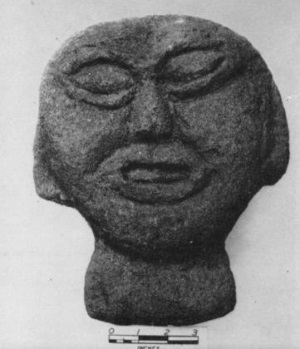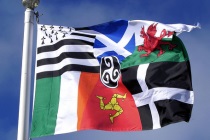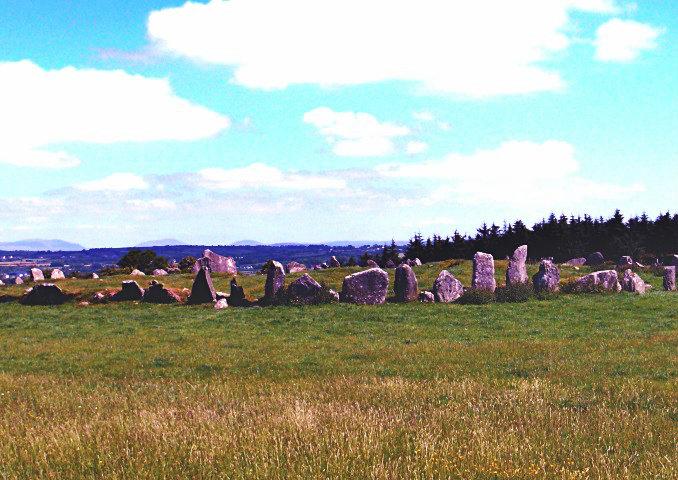The Celtic Festival of Beltane - And It's 5000 year old Monument
To the southwest of the Ulster city of Derry in County of Donegal, near the town of Raphoe, is a Neolithic Celtic monument known as the Beltany Stone Circle. The Beltany Stone Circle is estimated to have been constructed approximately 5000 years ago based on recent archeological research funded by the Irish Heritage Council. Dating Beltany from about 3000 BC makes this monument older than Stonehenge and the Egyptian pyramids (some published sources conversely date the construction of the stone circle at between 1300 and 800 BC).

A local group that is dedicated to the preservation of this little known site is the Raphoe Community in Action group. With funding from the Heritage Council of Ireland they have been engaged in an on-going archaeological research project at the site.
As the name implies, the Beltany Stone Circle is thought to be associated with the Celtic Feast day of Beltane. Supporting the connection between the third Feast Day of the Celtic year and the Neolithic Stone Circle at Beltany is the fact that two of the stones in the circle have been calculated to align with the sunrise at Beltane.
Beltane, celebrated on May 1st, is one of the four ancient Celtic Feast days. The others being the Celtic New Year of Samhain (Halloween) on November 1st, Imbolg on February 1st which has strong connections to the Celtic Goddess Brigid and the the August 1st Celtic Harvest festival of Lughnasa which some scholars associate with the deity Lugh.
Daniel Collins in his December 2015 Article “The Beltany Stone Circle” (linked below) quotes local Ulster historian James L. Lynch on the connection between the Beltany site and Druidical rituals associated with the Celtic Feast day of Beltane:
The stone circles of Ireland, and beyond, are cattle crushes or corrals, for want of a better description. The Irish of old were practical, not willing to indulge useful energy, in erecting superlative structures, rather, necessary ones. The community would come together, to complete this structure, and maintain it, and it would be on a height, for who would want smoke damage to their houses. The fires would be lit for as long as it took to have all the cattle treated, and this would take place, on one day. This was an immense effort on behalf of the ancients, and a very important one for their survival. It is recorded that the inhabitants would change and barter their horses, their arms, or what other valuables they had. The siting of the stone circles undoubtedly led them to become a place of interest and trade which would invariably continue for a long time. The stones needed to be strong enough and tall enough to withstand large beasts in a frenzy, rubbing against them, seeking relief from ticks and heat. It’s a testimony to the builders the stones remain intact. Outer perimeter walls were necessary for the gathering-up, and cooling-off periods, for the cattle. It was compulsory for all cattle to be treated on the same day, for the remedy to be effective, and this focused type of cattle treatment, is not long dispensed with, in Ireland. Indeed, I am aware, of the prosecution of two County Down farmers, for not adhering to the treatment week, in the last century.
The Celtic Feast day of Beltane that is linked to the Beltany Stone Circles is unique amongst the Four Celtic Feast days. Beltane observances have survived in essentially archaic form due in part to its simplicity. The celebrations historically included the lighting of bonfires and driving cattle between the fires as a symbolic act of purification and fertility. Collins again:
According to the 17th-century historian Geoffrey Keating cattle, which were a primary food source for the pastoral Celts, were, along with other domestic animals, driven between these fires so as to destroy any ticks, parasites and vermin they might potentially have been carrying; it was hoped this would have ensured the animals’ protection against possible future disease.
Eileen Battersby in a November 2005 article in the Irish Times on visiting the site portrayed the aspect of the Beltany Stone Circle as follows:
One of five such monuments in a county rich in archaeology, and one of the finest in Ireland, it overlooks what was once the ancient territory of Magh Itha. Aloof, imposing, and profoundly spiritual, this great stone circle, once a ritual or ceremonial site, is as old as Newgrange. As its name suggests, Beltany must have had associations with the Celtic feast of Beltaine (also spelt Bealtaine), celebrated each year on May 1st and part of pastoral life devised to encourage the summer growth. It is also believed that, in common with Newgrange, there is evidence of astronomical alignment involving two sets of two stones. One of the alignments takes place at sunrise in early May, the other corresponds with the winter solstice. Beltany Stone Head
And then there is the curious story of the Beltany Stone Head found at the site. An Iron Age stone carving which most likely depicts a Celtic god.
The web site “ChooseIreland” (linked below) describes the Beltany Stone head as follows:
This Iron Age stone carving depicting what is most likely a Celtic god was found in fields near Raphoe some decades ago. The best-known example among many ancient stone idols found in the Raphoe area, its stylized features and the presence of a neck-ring or torc suggests it is from the late Iron Age period, or around 2,000 years old. Known as The Beltany Stone Head, historians believe this and other idols indicate the stone circle was used for centuries — even thousands of years — after its original construction. They believe the stone head may have been used in ritual practices at the Circle — perhaps to ward off evil spirits. The artifact is now located at the National Museum in Dublin. There is also a replica on display in the Donegal County Museum in Letterkenny.
The Beltany Stone Head has a neck ring, or torc, around the base of the skull. The Torc is an emblematic piece of jewelry associated with Celtic civilization. Time and time again the Torc has been unearthed in troves of Celtic artefacts and pictured being worn by figures in bronze and stone associated with Celtic settlement. The Torc, an undeniable marker of Celtic culture, persists to this day. Just look it up on the internet and you can get one for yourself. It is startling to think that this symbol of Celtic identity, a ubiquitous style of personal adornment, can reasonably be said to have been worn by Celts for at least the past 4,000 years, binds us still.
Sources: (1) www.chooseireland.com/donegal/beltany-stone-circle, (2) www.cultureheritageireland.ie, (3) www.askaboutireland.ie/tuugo.info (Linked to the Raphoe Community in Action website), (4) The Beltany Stone Circle: https://danieldcollins.wordpress.com/2015/12/17/the-beltany-stone-circle/, (5) https://danieldcollins.wordpress.com/2015/12/17/the-beltany-stone-circle/, (5) http://www.irishtimes.com/news/in-beltany-s-inner-circle-1.514554 (6) Dictionary of Celtic Mythology: James MacKillop: Oxford University Press: 1998







